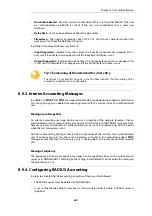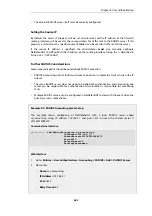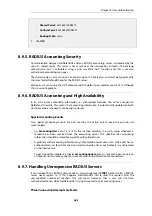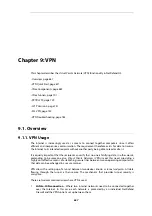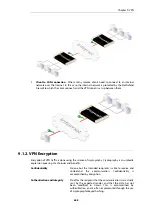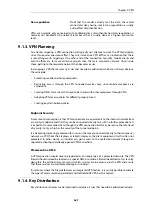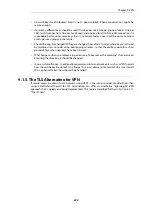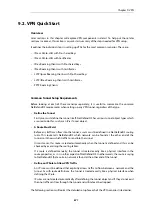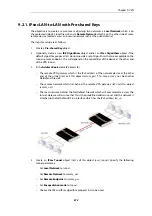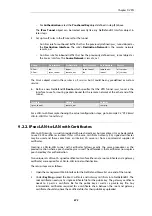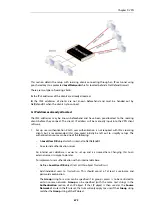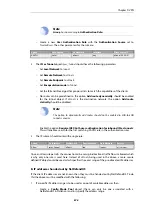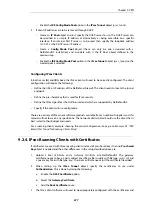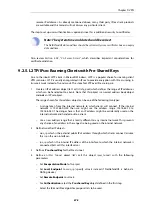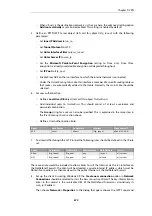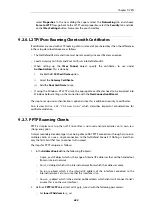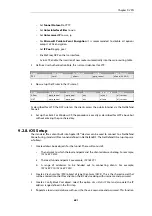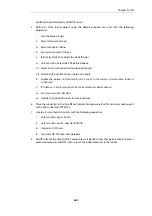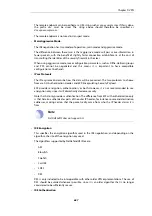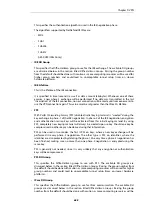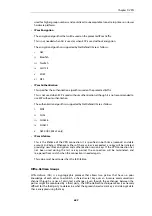
Note that the
Gateway Certificate
is sometimes referred to as the
Host Certificate
.
3.
Set up the IPsec Tunnel object as for pre-shared keys, but specify the certificates to use
under Authentication. Do this with the following steps:
a.
Enable the X.509 Certificate option.
b.
Select the Root Certificate to use. If there is a certificate chain to the gateway
certificate, all the intermediate certificates must also be added as root certificates.
c.
Select the Gateway Certificate.
4.
Open the management Web Interface for the NetDefend Firewall at the other side of the
tunnel and repeat the above steps with a different set of certificates.
Note: The system time and date should be correct
The NetDefendOS date and time should be set correctly since certificates have an expiry
date and time.
Also review
Section 3.9.4, “CA Server Access”
below, which describes important considerations for
certificate validation.
Self-signed certificates
instead of CA signed can be used for LAN-to-LAN tunnels but the Web
Interface and other interfaces do not have a feature to generate them. Instead, they must be
generated by another utility and imported into NetDefendOS. This means that they are not truly
self-signed since they are generated outside of NetDefendOS control and it should be
remembered that there is no guarantee that their private key is unique. However, the security
provided can still be considered adequate for some scenarios.
Two self-signed certificates are required and the same two are used at either end of the tunnel
but their usage is reversed. In other words: one certificate is used as the
root certificate
at one
end, call it Side A, and as the
host certificate
at the other end, call it Side B. The second certificate
is used in the opposite way: as the
host certificate
at Side A and the
root certificate
at Side B.
No CA server considerations are needed with self-signed certificates since CRL lookup does not
occur.
9.2.3. IPsec Roaming Clients with Pre-shared Keys
Chapter 9: VPN
674
Summary of Contents for NetDefendOS
Page 30: ...Figure 1 3 Packet Flow Schematic Part III Chapter 1 NetDefendOS Overview 30 ...
Page 32: ...Chapter 1 NetDefendOS Overview 32 ...
Page 144: ...Chapter 2 Management and Maintenance 144 ...
Page 284: ...Chapter 3 Fundamentals 284 ...
Page 392: ...Chapter 4 Routing 392 ...
Page 419: ... Host 2001 DB8 1 MAC 00 90 12 13 14 15 5 Click OK Chapter 5 DHCP Services 419 ...
Page 420: ...Chapter 5 DHCP Services 420 ...
Page 573: ...Chapter 6 Security Mechanisms 573 ...
Page 607: ...Chapter 7 Address Translation 607 ...
Page 666: ...Chapter 8 User Authentication 666 ...
Page 775: ...Chapter 9 VPN 775 ...
Page 819: ...Chapter 10 Traffic Management 819 ...
Page 842: ...Chapter 11 High Availability 842 ...
Page 866: ...Default Enabled Chapter 13 Advanced Settings 866 ...
Page 879: ...Chapter 13 Advanced Settings 879 ...


